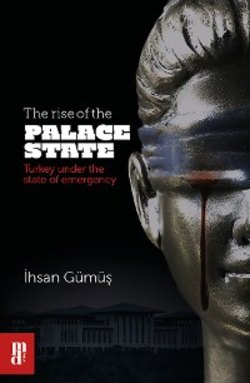Читать книгу The rise of the Palace State - Ihsan Gümüs - Страница 8
ОглавлениеINTRODUCTION
What is intended with this Book
This book is born of articles (they were seven in sum) that appeared on the Platform for Peace and Justice (PPJ) in 2017 – 18. Following their original publication, these articles,with a scrutiny of relevance and an update of the matters according to the course of events, have now been turned into the chapters of this very book. Therefore, each chapter says more than what the former articles said.
Online governmental and media archives were also critical for this book. I therefore gave the relevant links to the press news and legislative sources like Official Gazette, public announcements, media reports etc. I may be wrong, but it is my worry that the regime, in the near future, might prevent researchers from having access to such links and sources.
For the sake of readability, I have tried to avoid cluttering the text with footnotes or excessive references, quotations, and citation marks. Instead, I provided the reader with a detailed list of the decree laws issued during the State of Emergeny (SoE) (Table 8). Yet details (publication date and publication number in the Official Gazette) of other laws which I am referring to in the book can be traced from the footnotes. Through various tables, I tried to summarise the size of forfeiture and predation operations in monetary terms. I hope this approach, more or less, will allow further studies of researchers as well as providing an easy reference. I also believe it is a necessary moral endeavour.
In doing so, namely, working with a huge amount of legal documents, referring to dates and numbers through tables and footnotes, what concerned me was the following: although it all happened before our eyes, the events and conditions might be forgotten in a world on the move. Then, researchers, for example when studying the SoE regime, may find it difficult to consider the relevance of the documents and to connect the legislative operations with the actual cases. This may also be the case in the assessment of the original intentions at that time.
The prevailing aim of this book is not to show the atrocities which many Turkish citizens experienced during the SoE, but rather to deepen our knowledge and understanding of authoritarianism, to provide an up-to-date explanation of its roots, and to offer our thoughts on how a better foundation for an electoral democracy could be constructed in the future.
To this end, I rather examined consequences of the organised legislative operations (i. e. deliberate complication of domestic remedies, revival of civil death, black laws, immunity- impunity, forfeiture and predation strategies, paramilitary formations, normalcy of the SoE, court packing, concentration of power etc.) that have received less attention of scholars, lawyers and journalists most of whom focused on the justification of the operations in question.
My analyses have involved, to a large extent, a great deal of documentary research on the legal evidences against ill-fabricated narratives of the regime such as infiltration into the state, encroaching upon the army, orchestrating the coup attempt of 15 July 2016 etc. That is why the book provides great numbers of references, footnotes, and lists of legislations indicating that the servants of the regime worked hard to legitimize organised crimes like theft, plundering, murder, violence, and persecution. Within this book, I will demonstrate that “grand corruptions” (see chapter 6) and politically organised crimes have been documented even by the perpetrators themselves in the form of black laws, decrees, circulars, judicial decisions and so forth.
